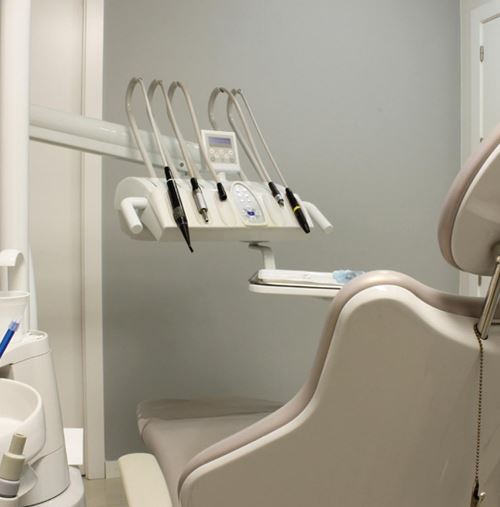Understanding Sun Damage
Sun damage occurs when your skin is exposed to harmful ultraviolet (UV) rays from the sun. This exposure can lead to immediate issues like sunburn, as well as long-term effects, including skin cancer. Recognizing these effects early can help you better protect and repair your skin.
Effects of UV Rays on Skin
UV rays are divided into two main types: UVA and UVB. UVA rays penetrate deep into the skin, causing aging and increasing the risk of skin cancer. UVB rays primarily affect the outer layer, leading to sunburn.
Both types can cause DNA damage to skin cells. This damage disrupts normal cell function and can lead to serious skin issues, including pigmentation changes and cancer.
To keep your skin healthy, it’s essential to limit UV exposure. Wearing protective clothing, seeking shade, and using a broad-spectrum sunscreen with at least SPF 30 can help shield your skin from these harmful rays.
Recognizing Signs of Sun Damage
Sun damage can show up in several ways. Common signs include:
- Sunburn: Red, painful skin after sun exposure.
- Freckles and Age Spots: Small, pigmented spots that can develop over time.
- Wrinkling and Sagging: Premature aging of the skin from long-term exposure.
You should also watch for changes in your skin, like new moles or changes in existing moles. Regular skin checks can help catch potential problems early. If you notice any concerning changes, consult a dermatologist promptly.
Immediate After Sun Care Tips
Taking care of your skin right after sun exposure is essential. You need to cool down your skin and provide hydration and soothing treatments. Here are some important steps to help your skin recover.
Cooling Down Your Skin
Start by rinsing off any sweat and sunscreen with a cool shower. This helps reduce heat and cleanses your skin. Make sure the water is not too cold, as extreme temperatures can cause shock to your skin.
After your shower, pat your skin dry gently with a soft towel. Avoid rubbing, as this can irritate sensitive skin.
For extra relief, try applying a cold compress to sunburned areas. You can use a clean cloth soaked in cold water or wrap ice in a towel. This can provide immediate cooling and reduce swelling.
If you have products with anti-inflammatory properties like cortisone cream, consider applying them to red or swollen spots for faster relief.
Hydrating and Soothing Treatments
After cooling your skin, focus on hydration. Drink plenty of water to replenish your body and help your skin recover.
Look for moisturizing lotions that contain soothing ingredients like aloe vera. Aloe vera is known for its calming properties and can help ease sunburn discomfort. Apply a generous amount to your skin, especially on red or irritated areas.
Also consider gel-based moisturizers, as they can feel refreshing and light on your skin. These products help lock in moisture and prevent dehydration.
Using them regularly after sun exposure can promote healing and maintain your skin’s health.
Long-Term Skin Repair Strategies
To effectively repair your skin after sun exposure, focus on replenishing moisture and stimulating collagen production. These strategies can help improve your skin’s health and appearance over time.
Replenishing Moisture
Keeping your skin hydrated is vital for healing. After sun exposure, use a moisturizer that contains ingredients like hyaluronic acid and squalane. These ingredients attract and lock in moisture, helping your skin feel soft and smooth.
Consider applying a moisturizer daily, especially after cleansing. Look for products with ceramides, which help restore the skin barrier. This is crucial because a strong barrier keeps moisture in and protects against further damage.
Drink plenty of water to hydrate your skin from the inside out. Include foods rich in water, like cucumbers and oranges, in your diet. They can boost your hydration levels.
Stimulating Collagen and Skin Repair
Encouraging collagen production can reduce the signs of sun damage such as wrinkles and fine lines. Retinol and retinoids are effective in enhancing collagen formation. Use them in your evening routine to promote skin renewal.
Adding niacinamide to your regimen can also be beneficial. It helps improve skin texture, reduce discoloration, and boost overall radiance.
Be patient; repairing sun-damaged skin takes time. Consistency is key. Combine these products with good sun protection habits for the best results. You can achieve healthier, youthful-looking skin.
Daily Skin Care Routine Adjustments
After being out in the sun, it’s important to adjust your daily skin care routine. This helps your skin stay healthy and recover from any sun damage. Here are two key areas to focus on: cleansing and targeted treatments.
Gentle Cleansing and Exfoliating
Start with a gentle cleanser to remove dirt, sweat, and sunscreen after sun exposure. Look for a creamy or hydrating cleanser. Avoid harsh soaps that can strip your skin’s natural oils.
You might also want to incorporate exfoliation but choose wisely. Opt for chemical exfoliants like glycolic acid or lactic acid. These are less abrasive than physical scrubs and help remove dead skin cells without irritation. Use exfoliants 1-2 times a week to keep your skin smooth.
Remember, your goal is to protect the skin barrier. So, always follow cleansing with a moisturizer to lock in hydration. Look for those with soothing ingredients like aloe vera or hyaluronic acid.
Incorporating Targeted Treatments
Use antioxidants to defend your skin against free radicals caused by UV exposure. Products with vitamin C are great, as they help brighten and repair your skin. Apply a vitamin C serum after cleansing for the best results.
If your skin feels particularly dry or inflamed, consider using moisturizers with added benefits. Look for those with ingredients like ceramides or niacinamide. These can help strengthen your skin and reduce irritation.
Finally, don’t forget to apply SPF every day, even when it’s cloudy. This protects your skin from further damage while you heal. Prioritize these adjustments to support your skin’s recovery.
Professional Treatment Options
After spending time in the sun, seeking professional help can make a big difference in repairing your skin. Qualified experts can provide tailored treatments that address your specific skin issues, such as dark spots, wrinkles, and an uneven tone.
Consult a Dermatologist
The first step in repairing sun-damaged skin is to consult a dermatologist. They are specially trained to assess your skin’s condition and recommend the best treatment options. During your visit, they will consider your skin type and any specific concerns you have.
Your dermatologist might suggest using topical treatments like hydroquinone for dark spots or vitamin A derivatives to improve skin texture. It’s essential to discuss your skin history and any previous treatments to find the most effective plan.
Advanced Repair Techniques
If your skin needs more intensive treatment, your dermatologist may recommend advanced procedures. Laser therapy is a popular choice that helps reduce fine lines and even out skin tone. This method uses focused light to target damaged skin areas, promoting healing.
Another option is intense pulsed light (IPL) therapy. This treatment targets pigmentation issues and improves overall skin appearance by stimulating collagen production. Both laser therapy and IPL can offer remarkable results, but your dermatologist will guide you on which is right for your condition and skin type.
Preventing Further Sun Damage
Taking steps to protect your skin after sun exposure is crucial. Using the right sun protection and adopting healthy sun habits can help prevent further damage and maintain your skin’s health.
Daily Use of Sun Protection
Every day is a great day to wear sunscreen, even when it’s cloudy. Choose a broad-spectrum sunscreen with an SPF of at least 30. Broad-spectrum means it protects against both UVA and UVB rays, which are harmful to your skin.
Apply sunscreen generously to all exposed areas at least 15 minutes before going outside. Reapply every two hours, or more often if you’re sweating or swimming. Don’t forget areas like your ears, neck, and the tops of your feet.
Using other forms of sun protection can also be helpful. Wear hats with wide brims to shield your face, and consider UV-protective clothing. Seeking shade during peak sun hours from 10 a.m. to 4 p.m. can further reduce your skin’s exposure to harmful rays.
Healthy Sun Habits
Incorporating healthy sun habits into your routine can make a big difference. Start by checking the UV index before heading out. This index informs you of the risk of harm from unprotected sun exposure.
When outdoors, aim to stay in the shade, especially during mid-day when the sun is strongest. You can also wear sunglasses that block UV rays to protect your eyes and the delicate skin around them.
Make hydration a priority. Drinking plenty of water keeps your skin hydrated and helps it recover. Including antioxidants in your diet, like fruits and vegetables, can also support your skin’s ability to heal and fight off damage.







